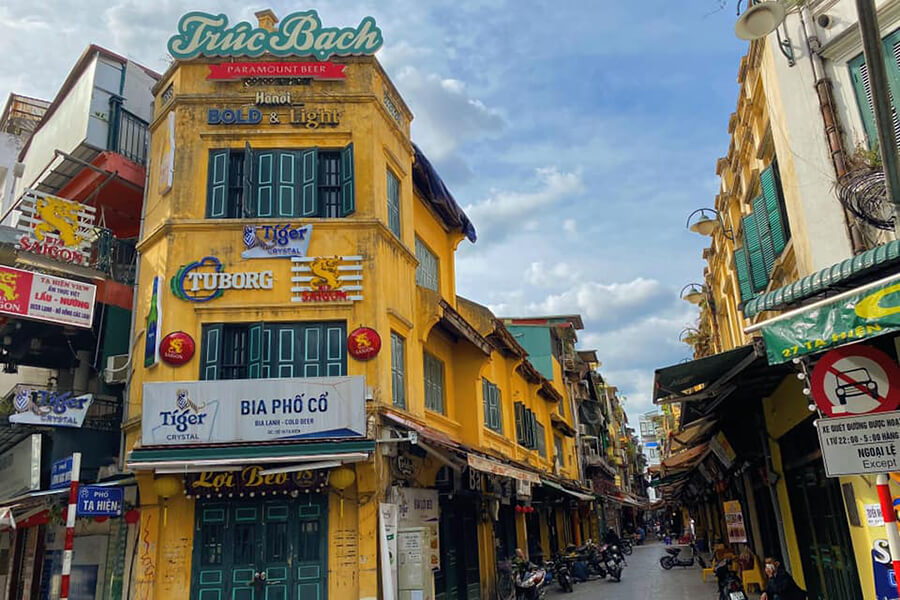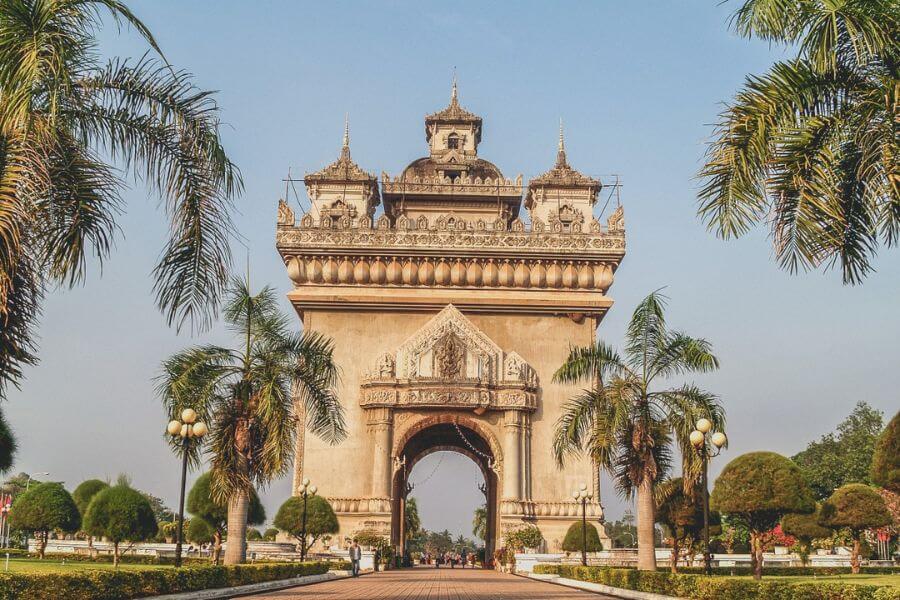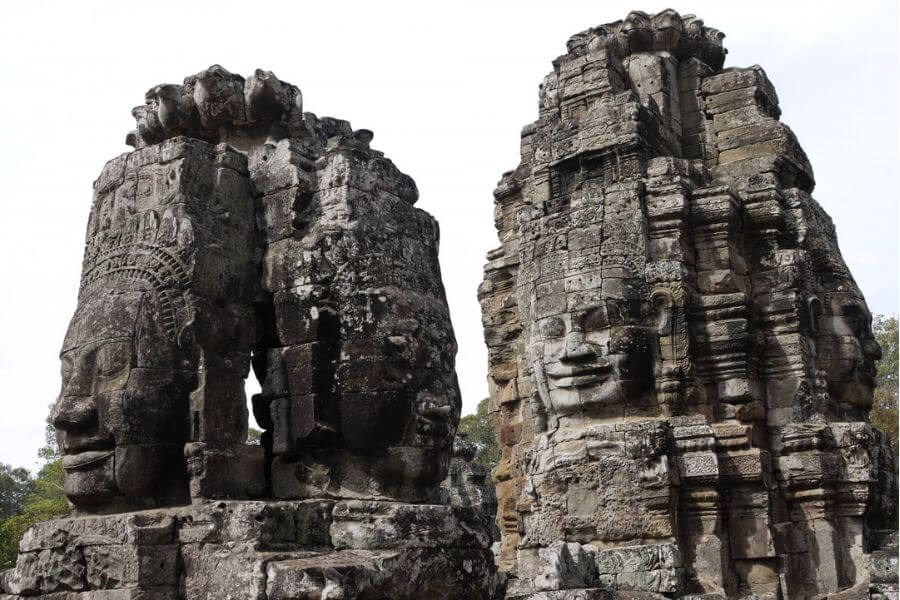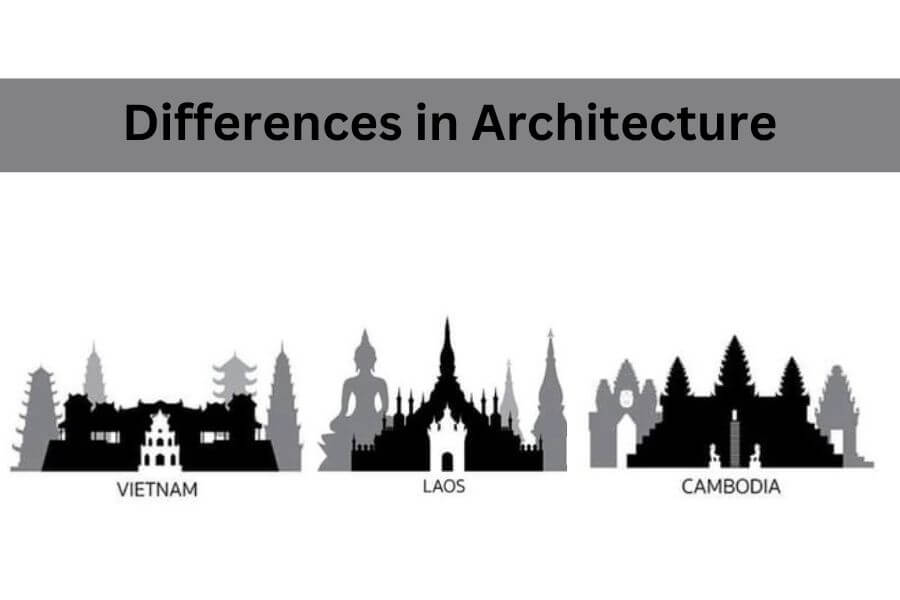The Southeast Asia architecture of Vietnam, Laos, and Cambodia heritages are deeply rooted in their distinct geographical, historical, and cultural backgrounds. Each country's unique style of architecture is a representation of its past and a mirror of its present. This post delves into the Architecture of Vietnam, Laos, and Cambodia, highlighting the differences between the three countries and what sets each architectural style apart.
Vietnamese Architecture
Vietnamese architecture is a unique blend of indigenous, Chinese, and French colonial styles. Traditional Vietnamese architecture is known for its intricate woodwork, curved roofs, and use of natural materials such as wood, bamboo, and stone.
One of the most iconic examples of Vietnamese architecture is the traditional "tube house" found in Hanoi and other Vietnamese cities. These narrow and tall houses were designed to maximize space in densely populated urban areas, and often feature a small courtyard or garden at the center of the building.
Another distinctive feature of Vietnamese architecture is the use of curved roofs, known as "yin-yang" roofs. These curved roofs are designed to resemble the shape of a dragon or a phoenix, and are believed to bring good luck and prosperity to the occupants of the building.
Vietnamese architecture was heavily influenced by Chinese architecture, particularly during the Ming and Qing dynasties. This influence is evident in the use of curved roofs, decorative motifs, and the layout of traditional Vietnamese houses.
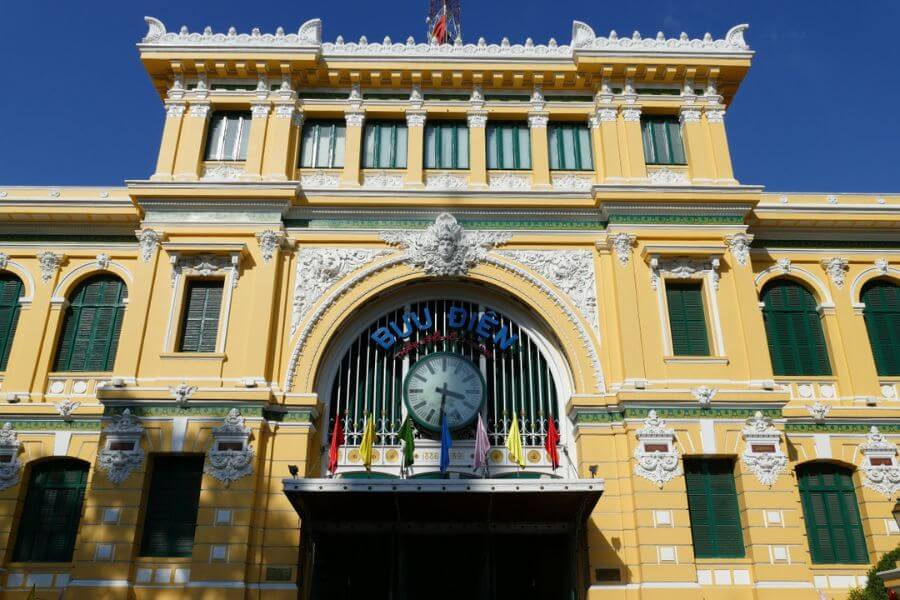 During the French colonial period, Vietnamese architecture underwent significant changes as French architects introduced new styles and building techniques. This led to the development of the Indochinese style, which blended European and Vietnamese architectural elements.
During the French colonial period, Vietnamese architecture underwent significant changes as French architects introduced new styles and building techniques. This led to the development of the Indochinese style, which blended European and Vietnamese architectural elements.
Some of the most notable examples of French colonial architecture in Vietnam include the Hanoi Opera House, the Saigon Central Post Office, and the Notre-Dame Cathedral in Ho Chi Minh City. These buildings feature a blend of neoclassical and local architectural elements, and are considered some of the finest examples of colonial architecture in Southeast Asia.
Overall, Vietnamese architecture is a fascinating blend of indigenous, Chinese, and French colonial styles that reflects the country's rich cultural heritage and history. Its unique features and distinctive styles make it a must-see for anyone interested in the history and culture of Vietnam.
Lao Architecture
Laos' architecture is heavily influenced by its Buddhist culture and traditional building techniques. Lao buildings are known for their use of natural materials, such as wood, bamboo, and thatch, which are readily available in the region.
One of the most iconic examples of Lao architecture is the traditional Lao house, which is typically made of wood and raised on stilts. This style of building is designed to protect against flooding and to provide a cool space to live in during hot and humid weather. The houses are also known for their intricate carvings and decorations, which often feature Buddhist motifs and symbols.
Buddhist temples, or wats, are also an important part of Lao architecture. These temples are typically constructed from wood or brick and are decorated with elaborate carvings and gilded ornaments. They often feature multiple buildings, including a main hall, a shrine, and living quarters for the monks.
In addition to traditional Lao architecture, French colonial architecture has also left its mark on the country. French influence can be seen in buildings such as the Presidential Palace and the Patuxai monument in the capital city of Vientiane. These buildings feature a blend of European and Lao styles, with ornate decorations and neoclassical elements.
Overall, Lao architecture is a unique blend of traditional building techniques and Buddhist culture, with a hint of French colonial influence. Its intricate carvings, gilded ornaments, and use of natural materials make it a distinctive and fascinating aspect of the country's cultural heritage.
Cambodian Architecture
Cambodian architecture is characterized by its intricate carvings, elaborate decorations, and use of stone. The most famous example of Cambodian architecture is the Angkor Wat temple complex, which is a UNESCO World Heritage Site and one of the largest religious monuments in the world.
Angkor Wat was built in the 12th century and is a masterpiece of Khmer architecture. The complex consists of multiple temples, including the main Angkor Wat temple, which is surrounded by a moat and features intricate carvings and sculptures depicting scenes from Hindu mythology.
In addition to Angkor Wat, Cambodia is also home to other notable examples of Khmer architecture, such as the Bayon temple in Angkor Thom and the Banteay Srei temple in Siem Reap. These temples feature similar architectural elements, including intricately carved stone walls and towering spires.
Outside of temples, traditional Khmer houses are made of wood and raised on stilts, similar to Lao architecture. However, unlike Lao houses, Khmer houses often feature more ornate carvings and decorations, reflecting the importance of aesthetics in Khmer culture.
Cambodia's colonial past has also left its mark on the country's architecture, with French colonial buildings found in cities such as Phnom Penh. These buildings feature a blend of European and Khmer styles, with ornate decorations and a focus on symmetry.
Cambodian architecture is defined by its intricate carvings, elaborate decorations, and use of stone, with Angkor Wat being the most iconic example of Khmer architecture. The blending of traditional Khmer styles with French colonial influence has also created a unique and fascinating aspect of Cambodia's cultural heritage.
The Diverse Architecture of Vietnam, Laos, and Cambodia: A Comparative Overview
Differences in Materials and Techniques
One of the key differences between the architectural styles of these three countries is the use of materials and techniques. Vietnamese architecture often incorporates French-inspired elements, such as the use of concrete and steel, while Lao architecture emphasizes the use of natural materials like bamboo and wood. Cambodian architecture, on the other hand, is known for its use of sandstone and the intricate carvings that adorn its buildings.
Differences in Symbolism and Meaning
Another key difference between the architecture of these three countries is the symbolism and meaning behind the designs. Vietnamese architecture often reflects Confucian and Taoist beliefs, with designs that promote balance, harmony, and order. Laos architecture, on the other hand, is heavily influenced by Buddhism, with designs that promote simplicity and serenity. Cambodian architecture, particularly the temples, are deeply rooted in Hinduism and features intricate carvings that tell stories of the gods and goddesses.
The architecture of Vietnam, Laos, and Cambodia is a testament to the rich cultural histories of these three countries. Each style is unique and reflects the values, beliefs, and aspirations of its people. A Laos tour, for example, can provide visitors with an opportunity to explore the intricate and colorful traditional buildings in Luang Prabang and Vientiane.
By understanding the differences in architecture, we can gain a deeper appreciation for the cultural heritage of these countries and the role that architecture plays in their identity.

